KARACHI: The latest United Nations monitoring report reveals that Tehreek-i-Taliban Pakistan (TTP) has emerged as the largest terrorist group in Afghanistan, bolstered by operational and logistical support from both the Afghan Taliban and factions of the Al Qaeda network.
“The Taliban do not view TTP as a terrorist entity: their ties are deep, with significant indebtedness to TTP,” states the 15th report of the ISIL (Daesh) and Al-Qaeda/Taliban Monitoring Team, submitted to the UN Security Council.
Estimating their strength between 6,000 to 6,500 fighters, the report notes that TTP now ranks as the largest among approximately two dozen groups operating freely under the Taliban regime’s oversight.
This substantiates Islamabad’s stance that Kabul remains reluctant to act against terrorist groups that target Pakistan, a concern reiterated by officials such as Defence Minister Khawaja Asif and Interior Minister Mohsin Naqvi.
The report highlights that TTP “continues to operate extensively in Afghanistan and conducts terrorist activities into Pakistan, often utilizing Afghan nationals.”
“TTP’s attacks against Pakistan have escalated significantly, rising from 573 in 2021 to 715 in 2022 and reaching 1,210 in 2023, with a continuing upward trend into 2024,” notes the report, updated until May 28.
These findings align with Islamabad’s claims of Afghan nationals’ involvement in recent terrorist incidents, including the Bisham bombing, which tragically claimed the lives of five Chinese engineers and their Pakistani driver. The report underscores this specific incident.
Additionally, the report affirms Pakistan’s concerns about NATO-grade weaponry, particularly night vision capabilities, being supplied to TTP following the Taliban’s takeover, enhancing the lethality of attacks on Pakistani border posts.
Al Qaeda’s Role
The report also questions the Afghan Taliban’s commitment to mitigating the TTP threat to Pakistan, citing historical ties, and describes Taliban’s “ad hoc support for, and tolerance of, TTP operations,” including arms supply, training, and support from Al Qaeda in the Indian Subcontinent (AQIS).
“AQIS aids TTP in conducting attacks inside Pakistan, with Tehreek-i Jihad Pakistan (TJP) often claiming responsibility to deflect attention from the de facto Afghan authorities.”
Recalling the September 2023 clash between Pakistani military and Afghan fighters — termed the “largest TTP attack” of the year — the report notes a substantial contingent from Al Qaeda supported a coordinated assault on two military posts in north-western Chitral.
Highlighting Al Qaeda’s presence across multiple Afghan provinces, primarily in the south-east, the report details their facilities used to train local fighters alongside TTP operatives.
Al Qaeda’s support to TTP includes “deploying Afghan fighters for its tashkils (military formations) and training camps in Afghanistan. AQIS-led training has led TTP to alter tactics, resulting in high-profile attacks on fortified targets.”
IS-K Threat
IS-K, recently expanding activities to Russia with daring attacks, features prominently in the UN report. While noting Afghan Taliban successes against IS-K, the report also highlights significant vulnerabilities.
IS-K and its regional affiliates are estimated to possess 4,000 to 6,000 fighters, with core strength estimates varying between 2,000 to 3,500. Reports indicate their infiltration into key Afghan ministries and efforts to embed members within groups like TTP.
Acknowledging Kabul’s operations pushing IS-K personnel across borders, the report expresses concern over security implications for Pakistan, Iran, and other Central Asian states.
Responding to “high attrition rates” among their ranks, the report describes how IS-K has reduced its Afghan presence while expanding external operations, sending skilled operatives and suicide bombers to Europe, Russia, and neighboring nations.
Describing their operations as “tactical rather than strategic,” the report criticizes Taliban’s counter-terrorism capabilities as inadequate against such threats.


